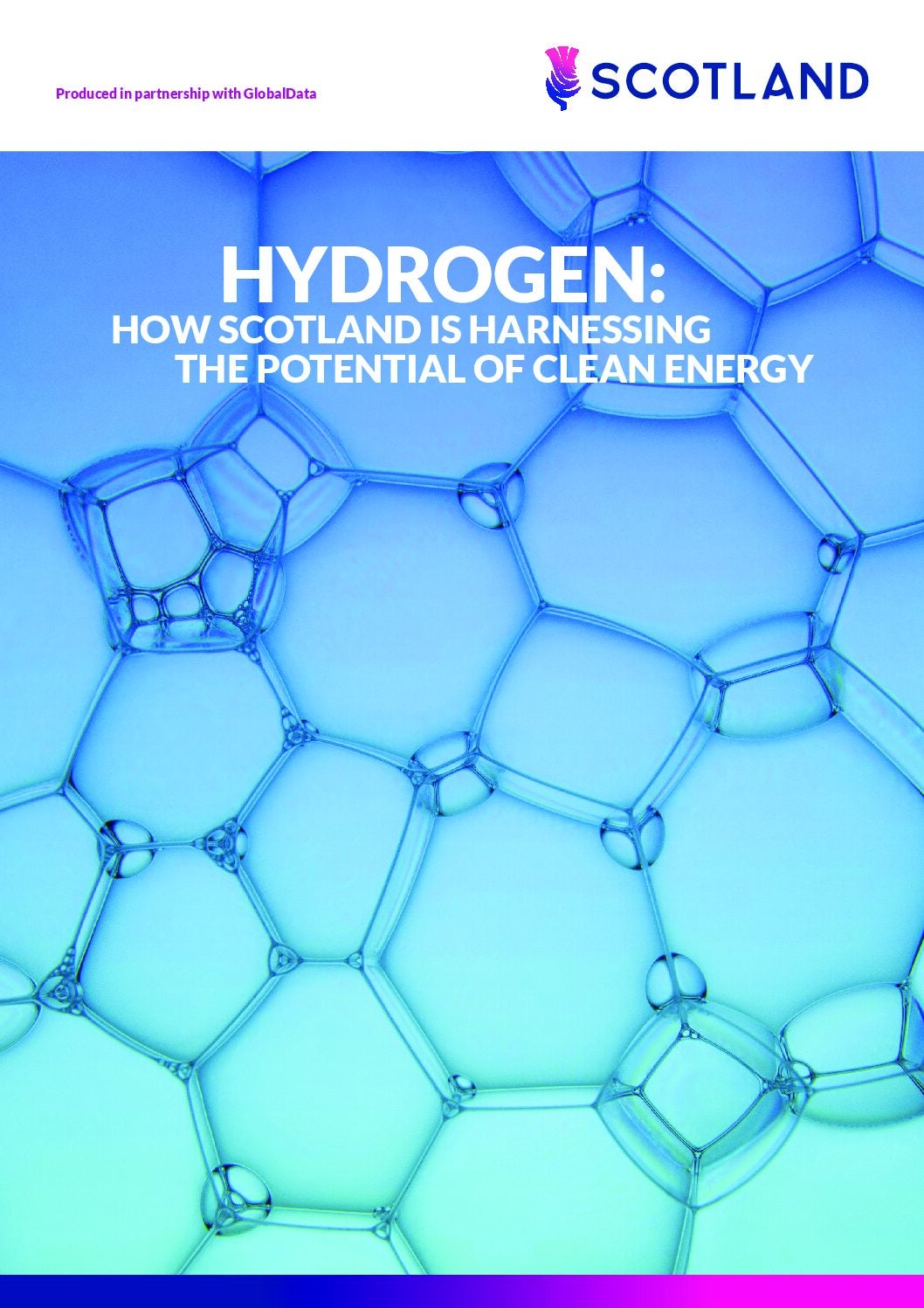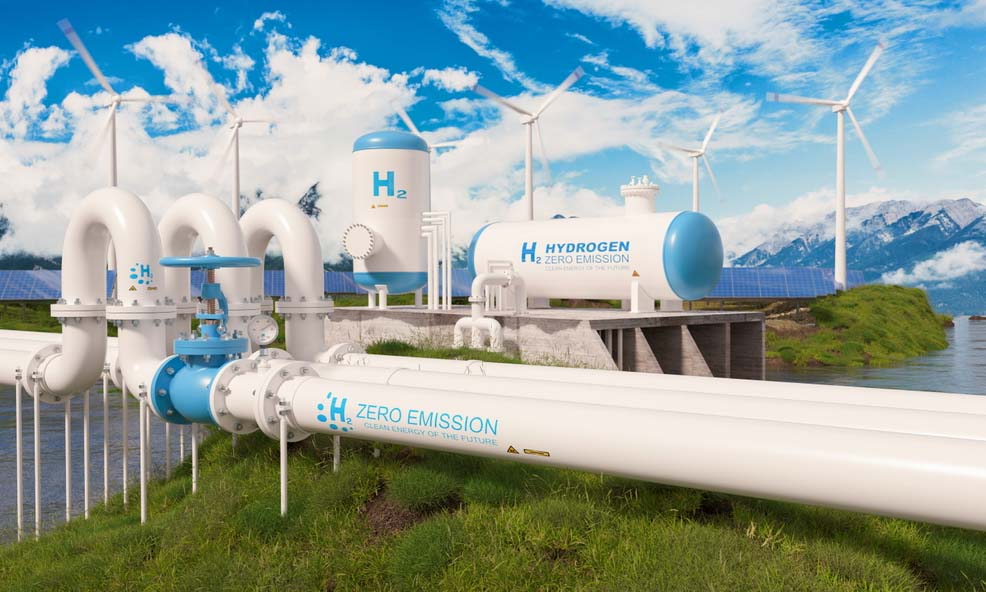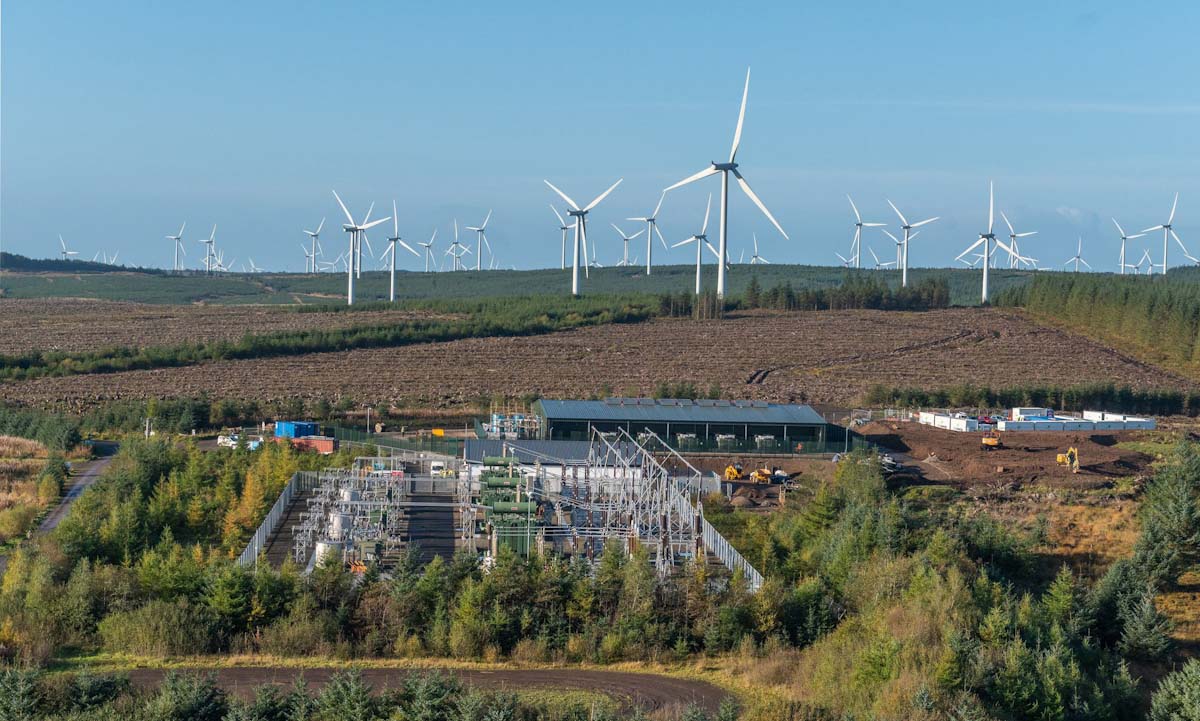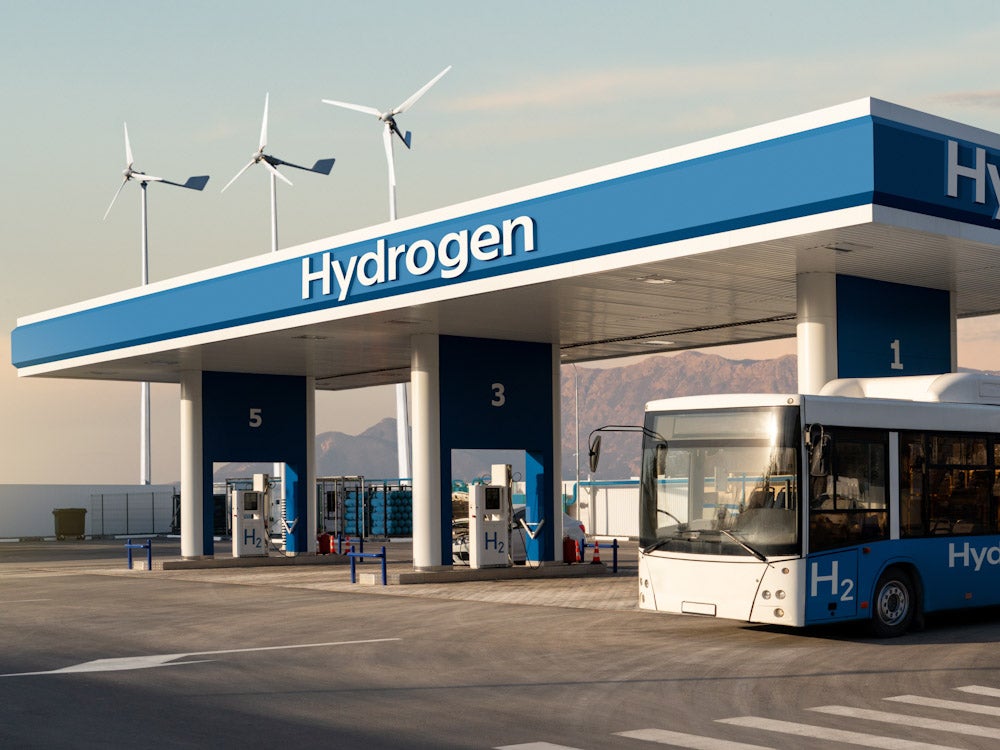
Decarbonising heavy-emitting modes of transportation is a fundamental challenge in the energy transition, with hydrogen viewed as an essential fuel in achieving this with zero tailpipe emissions.
Amid spiralling fuel prices and a global energy crisis, the need for clean fuels that are better insulated against global events has never been greater. With its potential for domestic production, hydrogen offers a further advantage here.
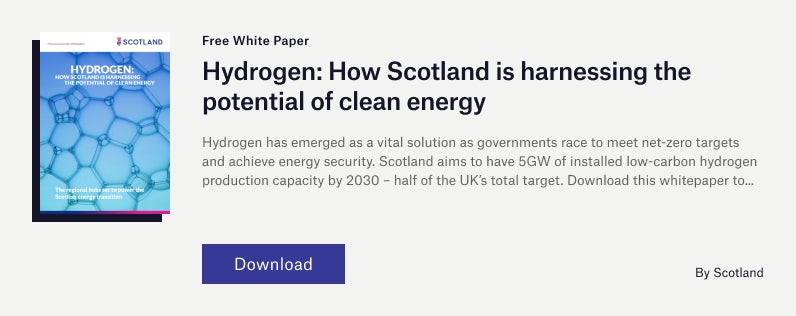
A recent report published by Scottish Enterprise in partnership with Ricardo estimates that more than 26 terawatt-hours of hydrogen could be consumed by industry and transport in Scotland by 2045. Market and government policy has the potential to change these estimates. Nevertheless, hydrogen capabilities must ramp up quickly to meet environmental targets.
Scotland has committed to net-zero emissions by 2045, and an interim target of a 75% reduction in emissions by 2030. To meet increasing demand, Scotland has considerable ambitions for hydrogen. Within the next six years, Scotland intends to reach 5GW in installed hydrogen production capacity through zero-emission or low-carbon methods. By 2045, this installed capacity target for hydrogen production will rise further to 25GW.
What bolsters Scotland’s prospects of realising these ambitions is that the country possesses a significant proportion of European offshore wind resources, as well as a huge potential for tidal energy. Projects are under way to fully harness these energy sources for hydrogen production.
Developing road transport for net zero
Recent surges in global oil prices brought the costs of diesel and hydrogen closer together. Meanwhile, hydrogen fuel cell vehicles can deliver a comparable operational range and load capacity to diesel engines. However, transitioning vehicles on the necessary scale from fossil fuels requires significant expertise and investment.
Modern transport networks have been built on the back of petrol and diesel, but these cannot be replaced with hydrogen like-for-like. Therefore, substantial upgrades are required to infrastructure and production processes. In this area, there is notable progress being made in Scotland.
Within the next decade, HGVs powered by hydrogen could be widely seen on long-distance transit routes on Scottish roads, according to Transport Scotland predictions. The national agency estimates the road transport sector currently comprises 58% of transport greenhouse gas emissions in Scotland. While battery-electric is considered the best option for reducing the emissions of smaller vehicles, the potential of fuel cell technology is being embraced for heavy-duty transport – and could be adopted on a similar scale to diesel.
Central to the development is Glasgow-based company Hydrogen Vehicle Systems (HVS). The business is developing heavy-duty vehicles that run on hydrogen and emit nothing but water. Having already attracted significant investment from the UK Government, HVS announced a partnership in February 2023 worth £3.4m ($4.27m) with supermarket chain Asda for the development of driverless hydrogen trucks.
HGVs contribute to only 5% of vehicle mileage yet a disproportionate 18% of road transport emissions. HVS’ offering has a class-leading 370-mile range and can refuel in 20 minutes, which will be pivotal in reducing emissions.
Building the refuelling infrastructure for hydrogen
Along with HGVs, hydrogen offers potential for other heavy-duty vehicles. Aberdeen City Council has pioneered the UK’s first hydrogen refuse collection truck. With a 15kg tank, the truck is refuelled at the Kittybrewster hydrogen refuelling station, one of two in the city. In January 2024, the Kittybrewster refuelling station opened to the public, having previously been used by buses since 2015. The station has been upgraded to serve cars, vans and trucks, alongside buses.
Aberdeen has been ahead of the clean energy curve since 2015 when it also introduced ten new hydrogen double-decker buses, a world first. Each bus saves 84 tonnes of carbon a year, equivalent to removing 38 petrol, or 40 diesel cars from the roads. The refuelling stations serve these vehicles, as well as 60 more across the Aberdeen area.
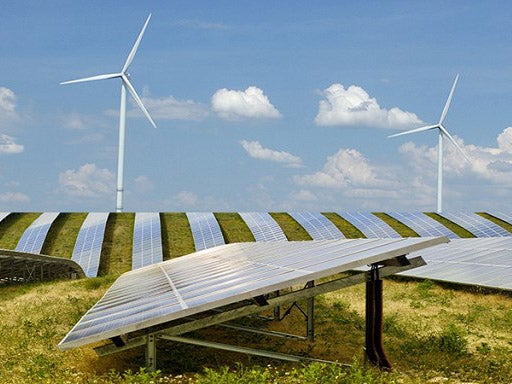
However, these refuelling station numbers must increase and spread if hydrogen is to become a viable alternative for powering transport. The technological capabilities of the fuel are already evident. However, if hydrogen is to be adopted more widely, the right infrastructure and investment must be in place to support it. Plans are under way for refuelling stations across the country, including in Angus, Cromarty, Dumfries and Galloway, Inverness, Lanarkshire, Moray and Perth. Alongside this, SGN’s H2 Caledonia plan is to establish a hydrogen transmission pipeline network across the country.
Expanding on the two existing refuelling stations in Aberdeen, the city council signed a joint venture agreement with BP in 2022 to develop a hydrogen hub, comprising a production facility and refuelling infrastructure. The target is to produce enough green hydrogen to power 25 buses a day from 2025. Future plans could see production scale up to produce green hydrogen for freight, marine and rail transportation, with the opportunity for exports.
To build production capacity, further solutions are in development around Scotland. Near Glasgow, Whitelee onshore wind farm is one example of how Scotland is utilising its vast renewable resources to power the electrolysers required to produce green hydrogen. Electrolysers split water into its chemical elements of hydrogen and oxygen to produce a fuel that emits no carbon emissions in production or consumption.
The Whitelee facility will be a core facility for producing green hydrogen, with ScottishPower storing supplies there. Once fully operational, the facility is projected to have a daily production capacity of eight tonnes for green hydrogen, equivalent to meeting the energy needs of 550 buses on a return trip from Glasgow to Edinburgh. The plan is to transport hydrogen via tankers to smaller refuelling hubs across the region. In a sign of how progress is expediting, the project has secured further funding from the UK Government, meaning green hydrogen could be commercially available from Whitelee before the end of 2026.
The UK Government has also provided funding to Cromarty Hydrogen Project, another key development. The project is to establish a state-of-the-art hub for the production, storage, and distribution of hydrogen to the region and beyond. The hub will sit on land near Beinn Tharsuinn wind farm in the Highlands and be powered by local renewables.
Retrofitting transport to run on hydrogen
New technologies will be essential to the energy transition, but to achieve a low-carbon economy more quickly and with minimal disruption, adapting existing infrastructure and systems is considered a better option than building everything from scratch. This also enables cost savings and presents the opportunity to bring in experts from other industries.
A prime example is a hydrogen fuel cell electric powertrain that was converted from an ex-ScotRail Class 314 train consisting of three cars, and ran successfully on the Bo’ness-Kinneil heritage line. The project was made possible principally through the work of the Hydrogen Accelerator team, based at the University of St Andrews with project partners.
The normal budget for such a project would be around £30m. Yet the Hydrogen Accelerator’s project partners delivered the project for a fraction of the cost, approximately £3m. Hydrogen-powered trains could be important in future, particularly in areas where electrification of rail lines is not the most practical option.
Once the project ended, the Hydrogen Accelerator donated the train to the Energy Transition Zone in Aberdeen to be part of their state-of-the-art skills academy. Fiona Landy was delivery manager of the Hydrogen Accelerator and based at St Andrews. She says the hydrogen train proved what is possible in converting existing rolling stock to run on hydrogen.
“It is great that we were able to donate the train to enable students to work on the train’s componentry. It is a real tangible asset,” says Landy, who now works for the Carbon Trust. “One of our key milestones was supporting the green skills agenda.”
The Hydrogen Accelerator also worked in proving concepts for other heavy-duty transportation. “We proved that we could do it,” adds Landy. “We proved it with the train, and you will see the continuation of other heavy-duty vehicle developments and across other sectors too, marine and aviation.”
A separate example in aviation is the January 2024 announcement from Loganair of its plans to launch services with a hydrogen-powered aircraft in Scotland’s Orkney Islands by 2027. Under a memorandum of understanding signed with Cranfield Aerospace Solutions, the companies will collaborate to develop plans for operating Britten-Norman Islander aircraft converted to use a new hydrogen-electric propulsion system.
Collaborations to advance hydrogen use
Landy adds that none of the success of the Hydrogen Accelerator would have been possible without the levels of collaboration involved across different sectors and areas of expertise.
“[The programme] supported other agencies and partners to put Scotland on the map [for hydrogen],” she says. “[We were] helping SMEs, pointing them in the right direction to ensure they had the right expertise to bring their products to fruition. That coordination with academia, public and private [sectors] was really helpful.”
In Landy’s work at the Carbon Trust, she remains in touch with many of her contacts from across the UK supply chain who are making notable advances in clean energy.
“It is all about the scale,” she says. “We are trying to avoid organisations getting stuck in silos and get away from the novel side and to the scale. [We aim to] collaborate, join up the public and private sector and make that impact.”
Aviation is another key area of collaboration. In January 2024, ZeroAvia announced it had a signed agreement with ScottishPower to co-develop low-carbon hydrogen supply to key airport locations and support the decarbonisation of the aviation sector. ZeroAvia previously announced a 70-engine agreement with Scottish- headquartered Ecojet. The company also has a long-standing partnership with AGS Airports, including Glasgow and Aberdeen, to explore the hydrogen infrastructure requirements to support hydrogen-electric flight and other potential use cases.
Using hydrogen to decarbonise existing fuels
Another promising use of clean hydrogen is to blend the gas with other substances to create low-carbon fuels for use in existing combustion engines. For example, blending clean hydrogen with captured carbon can create synthetic replacements for fossil fuels such as e-methanol. While there are carbon emissions with these hybrid fuel types, they are significantly lower than existing fossil fuels and require minimal adaptation for heavy-duty engines. There are also benefits for transportation, notably in sustainable aviation fuels – with Glasgow Airport a key site for such developments.
“The beauty of these solutions is that they can be drop-in replacements for fuels currently used with no requirement for altering any infrastructure,” says Jamie Robinson, hydrogen specialist for Scottish Enterprise’s low-carbon transition team. “They are also much easier to transport than pure hydrogen.”
In addition, hydrogen can be used to create ammonia for industrial processes and fuels with a substantially lower carbon footprint than current levels. Ammonia is commonly produced using grey hydrogen – made by steam methane reforming of natural gas – combined with nitrogen. This makes existing processes highly polluting. Replacing grey hydrogen with green or blue hydrogen – made in a similar process to grey hydrogen but capturing the carbon – could decarbonise industrial processes. Heavy industries such as shipping can also use ammonia as fuel.
Also in marine transportation, the Hyseas III consortium is a group of industry partners to prove the viability of integrating hydrogen fuel cells with hybrid-electric drives to reduce emissions from ferries.
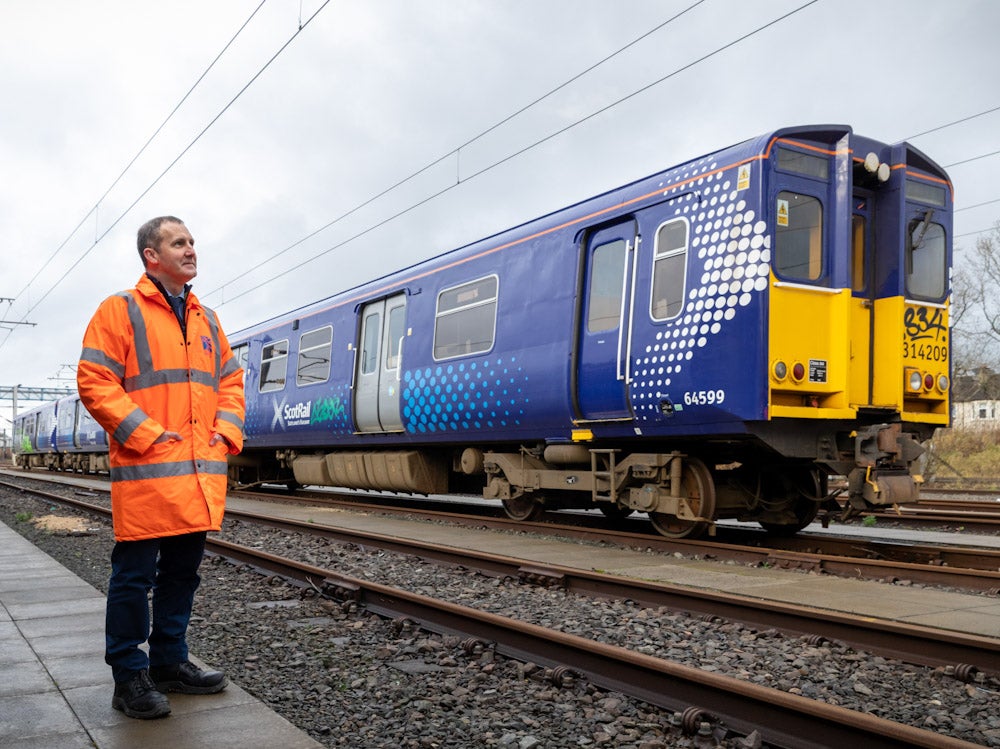
A long-term strategy for hydrogen in Scotland
Central to the hydrogen economy growth in Scotland is backing from the Scottish Government through a series of initiatives and long-term investment schemes.
“We have already seen a number of successful hydrogen demonstration projects in Scotland, including Aberdeen’s Hydrogen Bus project, and the Zero Emission Train Project – a joint undertaking between the public and private sectors,” says a Transport Scotland spokesperson. “The Scottish Government’s Hydrogen Action Plan has set out how we will build on this success in order to create a thriving hydrogen economy in Scotland.”
Partnerships between industry, businesses and academia are integral for driving forward growth of the hydrogen economy in Scotland and are already positioning the country as a world leader in this specialist field. With the government, agencies, and researchers all working together, a hydrogen-powered future grows closer every day.

